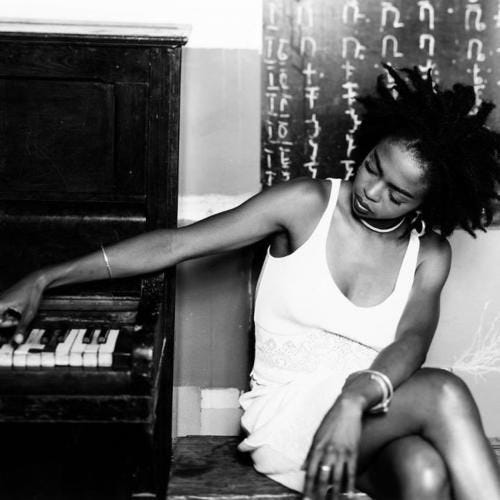Beyond CCM: Finding God in Secular Music
In music. . . what man pays homage to is something else, something he is waiting for. His enthusiasm is for something that music, or whatever is beautiful in the world, has awakened inside him. When man “fore-sees” this, he immediately bends his soul to wait for the other thing: he grasps what he can grasp, but he waits for another thing." -Luigi Giussani
Our attitude toward the ultimate Truth--or the “religious problem,” as I call it--can vary over time, growing in openness or hardening into apathy , depending on the circumstances we are facing and the people with whom we face them. Many popular songs speak blatantly about a longing for “more,” for some answer that will satisfy the desires of their heart. Some profess the answer is romance, pleasure, or God. Other songs indicate that the singer is still searching and is unsure where to find the answer, while still others will express their disillusionment with life and lament its emptiness, concluding that there are no real answers, and no real happiness.
In my religion class, I play a variety of popular songs which exemplify different attitudes towards the “religious problem.”
The first few songs I play are by artists who are aware of their need for a source of totalizing happiness and are asking these ultimate questions explicitly. “Shallow,” a duet by Lady Gaga and Bradley Cooper which was featured in the recent remake of A Star is Born, expresses disillusionment with superficial or finite happiness. “Tell me somethin’, girl, are you happy in this modern world? Or do you need more? Is there somethin' else you're searchin' for?”
This theme of “needing more” recurs throughout the song, indicating that their present circumstances are not enough to make them completely happy. What is that something more? Some students (?) posit that it’s a romantic relationship. But I would argue that the singers themselves perceive the romantic love they share with each other to be inadequate. Even in the “good times” they find themselves “longing for change.” What kind of change? They never say, but it looks like they go on a journey together to find that change, that something more, “crash[ing] through the surface” in order to find a deeper answer.
Then, take the “Intro” from J. Cole’s album 2014 Forest Hills Drive, in which he repeats the question “Do you want to be happy? Do you want to be free?” The music video gives the viewer the sense that Cole is on a journey to find the answers to these questions. He rides a bike through a deserted Times Square late at night, quickly glancing at the plethora of advertisements and store fronts, even getting off his bike to examine a BMW display. But, in the end, he gets back on the bike, as if to say that these materialistic answers don’t fully answer his desire for freedom or happiness.
For some artists, the search can be exhausting. In U2’s classic “I Still Haven’t Found What I’m Looking For,” Bono cites all the places he’s been and the people he's encountered in an effort to “be with you”--or to reach some conclusion: highest mountains, hills, the desert. He has kissed “honey lips.” He even claims to have had religious experiences: he has spoken with the tongue of angels and held the hand of a devil. Towards the end, he directs his lament to a “you” who “loosened the chains” and “carried the cross of my shame.”
“You know I believe it,” he proclaims. And yet, he still hasn’t found what he’s looking for Perhaps he knows the one to whom he’s directing his questions, but he still doesn’t know this person well enough to fully understand the answers being given to him.
Other artists we’ve listened to attempt to suppress the search through a variety of measures.
Puerto Rican trap artist Bad Bunny proclaims that “he’s fine” in his song “Estamos Bien” (We’re Doing Fine). He’s got everything he could ever need to be happy: money, parties, women, good health, family and friends. He’s content, and he makes it clear that he doesn’t need to search for anything greater. If anyone questions his status, then “Screw them!”—a sentiment he repeats throughout the chorus of the song.
In a similar vein, in the viral “Shake It Off,” Taylor Swift lists the criticisms she’s received over the years, resolving to shake off the frustration they cause. Don’t let yourself get down, don’t question your lifestyle...just forget the “haters,” she insists.
But other pop stars have a hard time “shaking off” their sense of limitation or inadequacy. In her song “Lucky,” Britney Spears cites all of the ways in which she is lucky. She has a successful career, an attractive boyfriend, money, fans. And yet: “If there’s nothing missing in my life, then why do these tears come at night?”
In her song “Cranes in the Sky,” Solange Knowles acknowledges that there is indeed something missing. She attempts to get rid of “it” (that sense of lack) through drugs, sex, clothes, a new hairdo. And yet, with each of her attempts, she finds that “it” comes back again.
The last set of songs we play explicitly speak of the artists’ relationship with God, each of them taking on a unique tone in their dialogue with Him.
In The Internet’s song “Penthouse Cloud,” the lead singer, Sid the Kid, expresses her disillusion with the violence and suffering that exists in the world. “Father, who art in Heaven, is this how you saw it when you made your creation, is this what you wanted?” Though she refers to Him as Father, she implies that she experiences God to be a distant figure, unconcerned with His creation, looking down from His privileged position on a “penthouse cloud” as He watches “the war outside.” She smokes weed and drinks while she asks these questions, conjecturing that “maybe we’ll never know, or maybe we’ll find paradise in the sky when we die.”
I juxtapose this “passive theodicy” with Marc Anthony’s song “Volver a Comenzar,” “Return to the Beginning.” He also expresses his frustration with God for the pain and suffering he’s experienced. But his dialogue with God is more direct and more demanding: “Where were You and what were You doing when my soul was in pain?” He needs an answer, in fact, he expects it: “I’m thirsty for You, I want to love You again. And You’re going to heal all of my wounds. . . we will begin again.”
The last song, “Tell Him” by Lauryn Hill, expresses her need for God in a way that demonstrates a certainty rooted in her past experiences. “Let me be patient, let me be kind. Make me unselfish without being blind. Though I may suffer I'll envy it not, and endure what comes because He's all that I got...and tell Him, tell Him I need Him, tell Him I love Him, and it'll be alright.” She trusts that He will provide for her and relies on several Scripture passages to bolster her faith.
My students are often surprised to find these religious themes floating around in the music they’re used to bopping their heads to while listening to the radio. They usually associate Gospel music, church hymns, or Christian Contemporary Music (CCM) with the category of “religious music.” But I argue that music itself is religious. It is a means to express our search (or fear of searching) for the Ultimate.
Now, my students don’t automatically “come to Jesus” through these lessons, but I’d say that’s an inadequate goal for a religion teacher. Christ met me through my daily reality, not through someone barging into my life and imposing an answer onto it. In the same way, I want my students to let Christ meet them where they are at, starting with their own culture. When my students leave class saying, “I’m never going to listen to the radio the same way again,” that’s when I know the Spirit is moving.
Originally published in the Communion and Liberation newsletter




